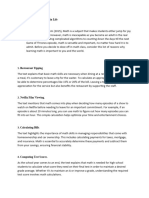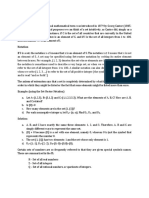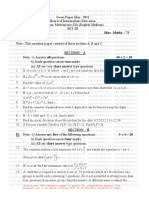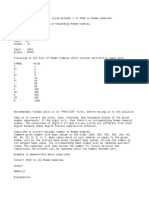0% found this document useful (0 votes)
25 views4 pagesTechnical Document On Database Normalization
The document provides a comprehensive overview of mathematics, detailing its definition, branches, historical development, and applications in various fields. It emphasizes the importance of mathematics in daily life, science, engineering, finance, and technology. Ultimately, it highlights the necessity of mathematical understanding for personal and professional growth.
Uploaded by
dgustinrayCopyright
© © All Rights Reserved
We take content rights seriously. If you suspect this is your content, claim it here.
Available Formats
Download as DOCX, PDF, TXT or read online on Scribd
0% found this document useful (0 votes)
25 views4 pagesTechnical Document On Database Normalization
The document provides a comprehensive overview of mathematics, detailing its definition, branches, historical development, and applications in various fields. It emphasizes the importance of mathematics in daily life, science, engineering, finance, and technology. Ultimately, it highlights the necessity of mathematical understanding for personal and professional growth.
Uploaded by
dgustinrayCopyright
© © All Rights Reserved
We take content rights seriously. If you suspect this is your content, claim it here.
Available Formats
Download as DOCX, PDF, TXT or read online on Scribd
/ 4

























































































